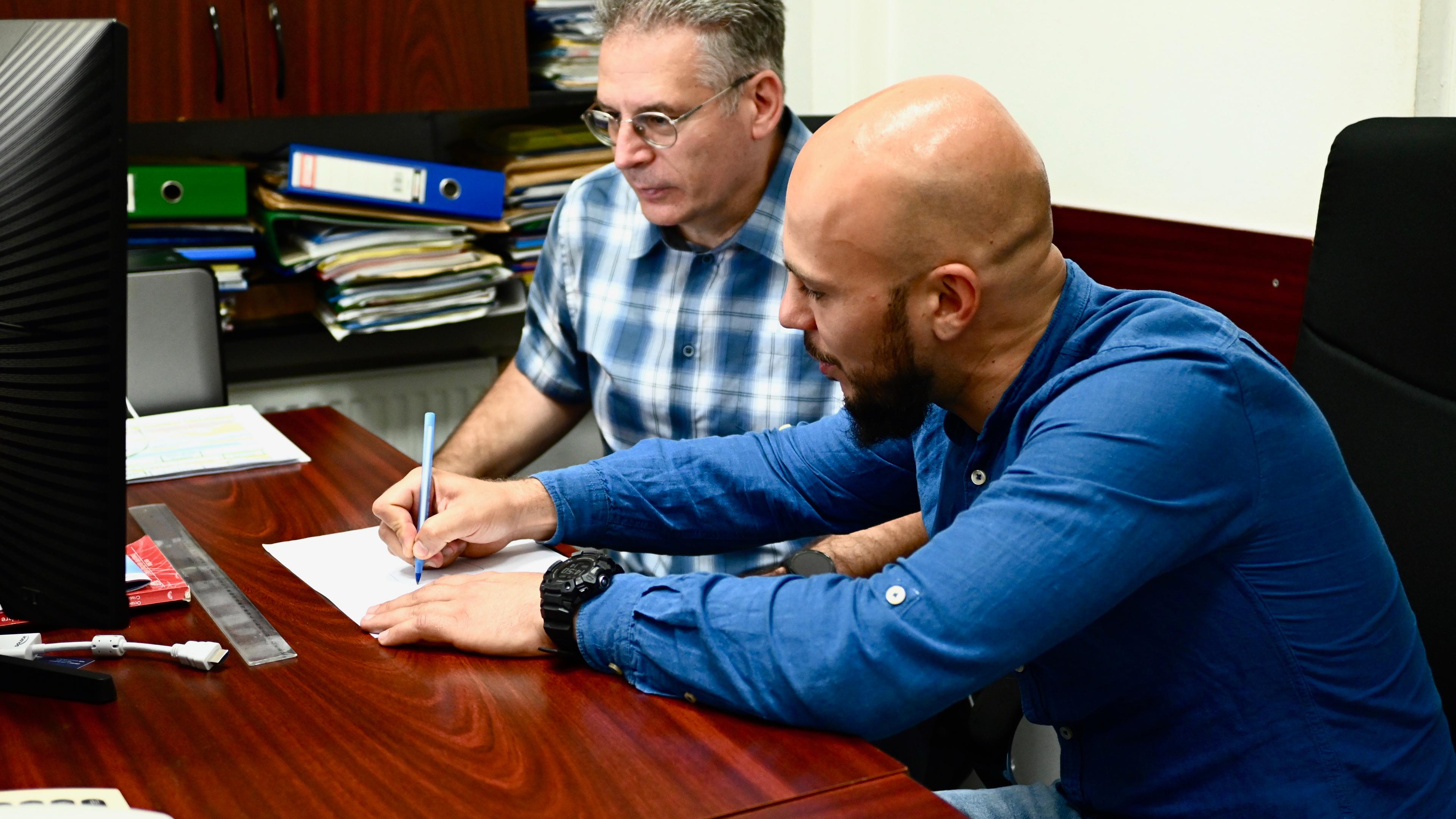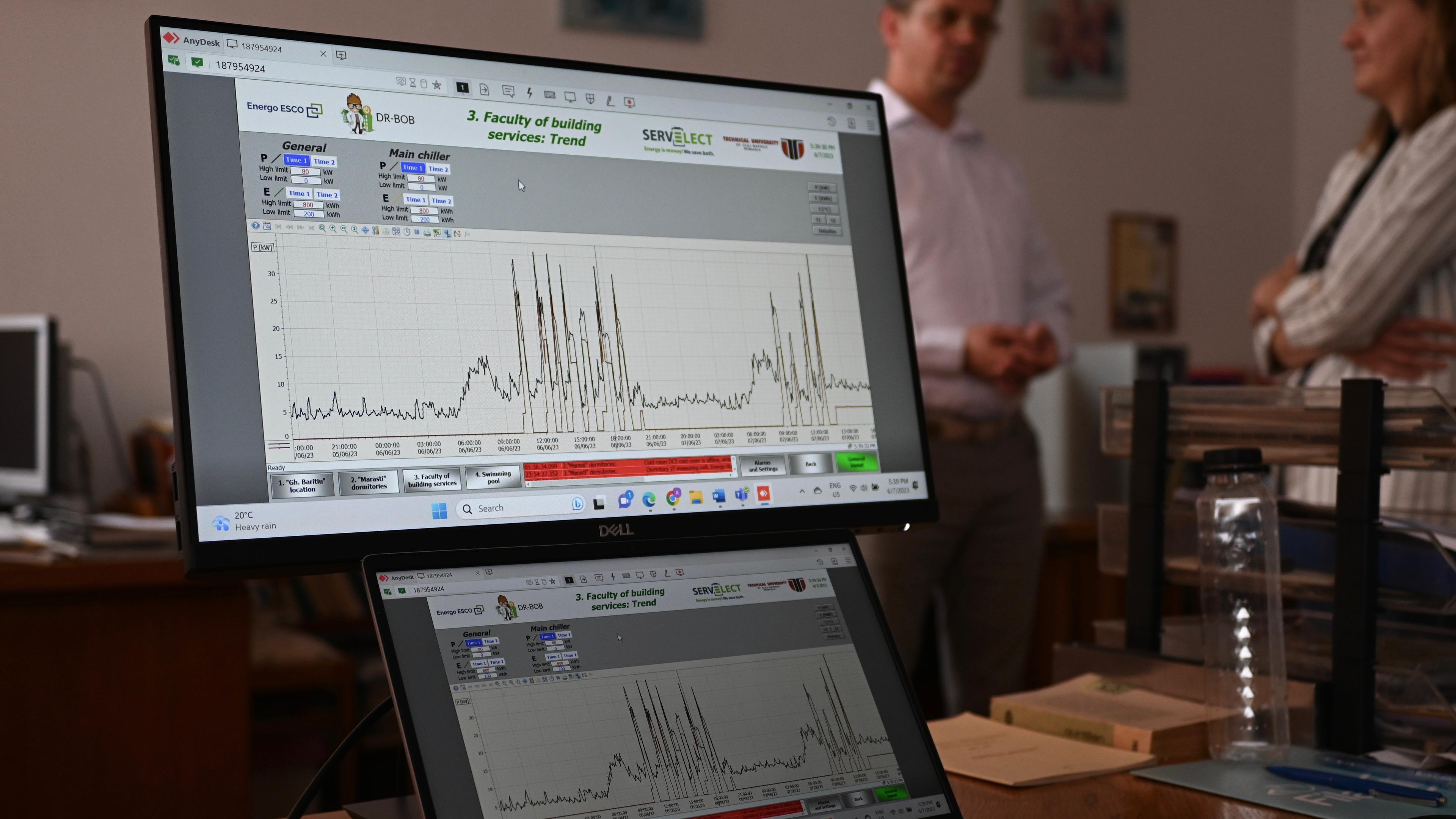Romanian-Norwegian Team Revolutionises Smart Energy Solutions
 © Eva Marie Bulai
© Eva Marie BulaiThe Do It Smarter project, financed through the EEA and Norway Grants is in its early days. To understand more about the rationale behind this massive undertaking, Innovation Norway pays a visit to the beneficiaries at the Technical University of Cluj-Napoca.
Dr. Andrei Ceclan welcomes us to his office, and PhD student Timea Farkas joins us to explain how everything started.
A clear direction
Innovation Norway: So, why did you apply for the EEA and Norway Grants in the first place?
Dr. Ceclan (Technical University of Cluj-Napoca): The initial approach when we proposed this project was to give Timea a clear direction in the field of energy optimisation in buildings. And we were excited to find a Financial Mechanism that could facilitate that.
Timea Farkas (Technical University of Cluj-Napoca, PhD): Yes, I am going to materialise the results in my PhD-thesis. So, I am involved in both the research and the management of the project. But, if successful, this project has the potential to go beyond my PhD thesis and have real life applications, saving the regular consumer a lot of money on their heating bills.
The project is anything but small scale. There are several partners involved.
From the Romanian side, the participants in the project are the researches at the Technical University of Cluj-Napoca and the Polytechnic University of Timisoara. Alba Iulia Municipality is also a part of the project together with the Association Centre for the Study of Democracy. From Norway, Høgskolen in Østfold, Østfold County Council and Nxtech are all active partners in this Romanian-Norwegian project.
The project has three different pilot sites:
- Social households in the Romanian city of Alba Iulia;
- Educational and research facilities at the University in Cluj;
- Residential households in Norway.
Innovation Norway: How do you work to optimise the energy use in Alba Iulia?
Dr. Ceclan (Technical University of Cluj Napoca): We have the heating system, which is common in each apartment block, and then we have individual meters in each apartment. We are now focusing on optimising the energy supply, including the local energy source because these apartment blocks also have solar panels on the roofs.
 © Eva Marie Bulai
© Eva Marie BulaiWhen to use the washing machine
A part of the project is also to suggest to the residents how they can use energy more efficiently.
Timea Farkas (Technical University of Cluj-Napoca, PhD): We can tell them how they can organise their energy consumption during the day in order to synchronise with the supply from renewable energy sources. For instance, we've taught people that it's best to use the washing machine when the energy prices are lower.
One of the objectives of the project is to increase the amount of renewable energy supply, both in Cluj and Alba Iulia.
Not only monitoring
In some of the buildings at The Technical University in Cluj, they already have a building monitoring system implemented through a different project. This monitoring system allows them to observe the consumption of energy in real time. Through Do It Smarter, they want to advance from monitoring to controlling.
Timea Farkas (Technical University of Cluj-Napoca, PhD): We want to have an automatic component based on Artificial Intelligence to identify anomalies based on historical data. For instance: if during the weekends, we have an average consumption. But if one weekend, all of a sudden, the energy consumption is really high, then we can have a kind of alarm that can announce that something is wrong.
At the Technical University in Cluj, they are focusing on electrical engineering. The partners from the Norwegian company Nxtech are working on a solution, which is power to heat based.
Smart water heaters
Nxtech is a Norwegian consultant company, working a lot on water heaters with smart heaters. Terje Wahlstrøm, the contact person for Nxtech, picks up the phone in Norway.
Terje Wahlstrøm (Nxtech): We have focused on the internet-connection type, developing an estimated state of charge. You heat the water to - let's say - 70 degrees; the hot water will stay on top. We want the consumer to use the water heater more like a battery. When there is cheap power available you heat it. At the opposite end of the spectrum, when the power is expensive, you use what you have stored.
To estimate the state of charge in the water heater is not an easy task, so through the project, another team is working to make new algorithms. Let's jump back to Romania, and this time we are finding ourselves in Timisoara.
Heaters on electricity and gas
Two men stare into a curved computer screen. They study some coloured lines, which apparently tells them something about the temperatures inside the water heater.
 © Eva Marie Bulai
© Eva Marie BulaiDr. Cristian Vasar (Polytechnic Uiversity of Timisoara): we need to know the actual temperature of the water inside the heater to verify our model. We get data from Nxtech to verify if the model is good or not.
In the project site of alba Iulia, they don't have electrical heaters, so they can only measure the input temperature of the water and the output temperature. The Nxtech heater is electric.
Dorin Bordeasu (Polytechnic University of Timisoara, Research Fellow): That's why we are developing a model that is valid both for electrical and conventional heaters. We will validate our model by using data from Nxtech and then we will apply it in Alba Iulia.
Once they have validated their model, they will try to implement different control strategies in order to increase efficiency. They will then compare different strategies to see which one is better, according to data provided through observing consumer behaviour.
Free energy when the sun shines
In the Alba Iulia site, they have solar panels. Through Do It Smarter, they try to find out how to make use of this free energy in the smartest way possible.
Dr. Cristian Vasar (Polytechnic University of Timisoara): When you have free energy in the middle of the day, it is better to use that free energy than the paid-for one. We also want to be able to store the energy inside the heater when we have sun.
The problem is, if you heat all the water inside the heater with gas, you will pay for the gas, but when the sun comes up you have nowhere to store energy, and that free energy is wasted.
Dorin Bordeasu (Polytechnic University of Timisoara, Research Fellow): Let me explain to you what we are trying to achieve. Through this project, we want to improve the efficiency of the heating systems. That's why we need to know the consumer profiles, especially their water usage tendencies. Then, based on what we know about the consumer and what we know about the sun, we decide if it is time to heat the water with gas or if we should wait for the sun.
A heater that can make decisions
We get back to Terje Wahlstrøm on the phone from Norway. He talks about the expectations they have for this project.
Terje Wahlstrøm (Nxtech): We do expect a much better estimate of the state of charge of the heater. We are also developing a new communication interface in which the heater can make its own decisions on when to heat or not. We download the prices of power for the future, and then we can plan the heating. For the end customer, it is about becoming greener, but also saving money on power.
Innovation Norway: do you foresee any future cooperation with your current partners?
Terje Wahlstrøm (Nxtech): The technology we are developing in this project is a puzzle in a bigger picture. It would be wonderful if we could create synergies and use this technology to start new businesses in Romania. Solar energy could go together with the heater; it makes sense to keep the energy in the water heater instead of selling it on the market. Let's not forget, energy business is an emerging business that very soon will make a lot of financial sense!
Synergies
Back at the university in Cluj we ask if the Do It Smarter project can make room for continued cooperation between the parties involved.
Timea Farkas (Technical University in Cluj, PhD): We are not ending the project here. We want to exploit it as much as possible. At the end of this project, we want to take the results and present it to the municipality. The municipality has around 282 public buildings in Cluj, the University has 42, so we have a large potential for further application.
They underline the main goals of the project is to ensure optimisation strategy into nearly real time, so the flow of energy in the respective buildings is permanently optimised. Through the project they want to save energy, save money, and reduce the CO2 footprint of the buildings.
Back in Timisoara, we ask what the best way is to improve efficiency in the buildings they are looking at.
There are three main directions: first, you can fine tune the produced the produced energy, depending on the energy source you choose to use. Second, you can instruct the consumers to use more economic devices, like LED-bulbs for example or a newer washing machine with higher energy efficiency. Third, you can try to change the consumers' habits, make them aware of how they can increase efficiency by changing their own habits. Examples include when to shower, when to use the washing machine, etc.
Dorin Bordeasu (Polytehnic University of Timisoara, Research Fellow): Maybe some consumers don't think that saving 1 euro in energy per day means a lot, but actually in the long term, it translates to substantial savings.
After this interview took place, a delegation from Do It Smarter in Romania visited Norway in late June 2023. There, they met with their project-partners Nxtech and Professor Lucian Mihet at Høgskolen i Østfold.
Facts
Programme: Energy programme
Grant amount: €451.000
Total project cost:
Finalised: in implementation
Expected results
- To provide an end-to-end solution for customers’ energy management needs, based on demand side management for energy and cost savings.
- The goal is to integrate and combine the management of different energy technologies: renewable energy sources with storage technologies, heating, ventilation, air conditioning system control, lighting, heating, and cooling into a building and energy management system.
- 5 new jobs (in Cluj)
About the Energy Programme
The Energy Programme in Romania, managed by Innovation Norway, aims at less carbon intensive energy and increased energy security, providing grants for investments in renewable energy, energy efficiency and electrification of households. The Programme financing is ensured through the EEA and Norway Grants which contribute to social and economic development in 10 European countries, including Romania.
About Innovation Norway
Innovation Norway is the Norwegian Government's most important instrument for innovation and development of Norwegian enterprises and industry. Innovation Norway supports companies in developing their competitive advantage and to enhance innovation. In Romania, Innovation Norway is managing two programmes: the Energy Programme and the SMEs Growth Programme.
